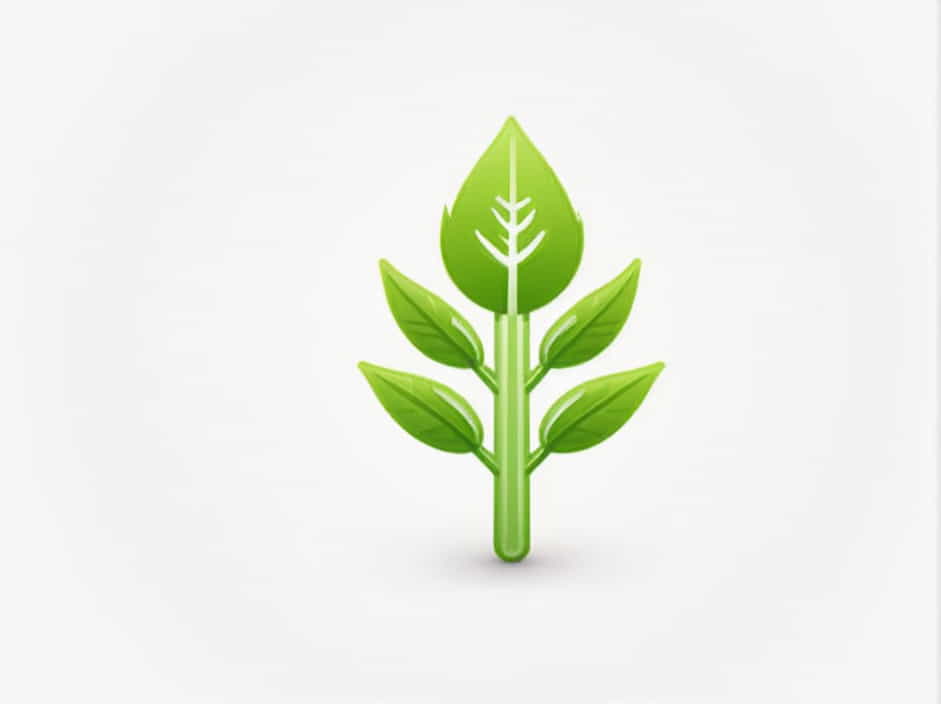Plants have evolved various strategies to survive in different environments, and one fascinating adaptation is the development of underground stems with thick, fleshy leaves. These structures help plants store food, conserve water, and endure harsh conditions.
This topic explores the types, functions, and examples of underground stems with fleshy leaves, highlighting their importance in plant survival and human agriculture.
1. What Are Underground Stems with Thick Fleshy Leaves?
Underground stems with thick fleshy leaves are specialized plant structures that grow beneath the soil. Unlike regular roots, these stems store nutrients and water, helping plants survive drought, cold, and poor soil conditions.
These modified stems often appear swollen due to stored starch, sugars, and water, making them essential for plants in arid or seasonal climates.
2. Types of Underground Stems with Fleshy Leaves
There are several types of underground stems with thick leaves, each serving different purposes.
A. Bulbs
A bulb is an underground stem with layers of thick, fleshy leaves surrounding a central bud. The leaves store food, enabling the plant to regrow after dormancy.
Examples of Bulb Plants
- Onion (Allium cepa) – Each layer of an onion is a modified leaf that stores nutrients.
- Garlic (Allium sativum) – Forms cloves, each acting as a mini bulb capable of growing into a new plant.
- Tulip (Tulipa spp.) – Grows from a bulb that remains dormant during cold seasons.
- Lily (Lilium spp.) – Uses bulbs to survive winter and bloom annually.
B. Corms
A corm is a swollen underground stem that stores food. Unlike bulbs, corms do not have layered leaves; instead, they have a solid interior.
Examples of Corm Plants
- Taro (Colocasia esculenta) – Grown for its starchy corm, commonly used in cooking.
- Crocus (Crocus spp.) – Produces vibrant flowers from corms.
- Gladiolus (Gladiolus spp.) – Uses corms to survive winter and sprout in spring.
C. Rhizomes
A rhizome is an underground horizontal stem that grows sideways and produces new shoots. Some rhizomes develop fleshy leaves for extra nutrient storage.
Examples of Rhizome Plants
- Ginger (Zingiber officinale) – Thick rhizomes store moisture and nutrients.
- Turmeric (Curcuma longa) – Produces underground stems rich in curcumin.
- Banana (Musa spp.) – Uses rhizomes to generate new plants.
D. Tubers
A tuber is an underground storage organ that develops from a stem or root. While most tubers do not have fleshy leaves, some do.
Examples of Tuber Plants
- Potato (Solanum tuberosum) – Stores energy in its underground tubers.
- Yam (Dioscorea spp.) – Similar to potatoes but varies in texture and taste.
3. Functions of Underground Stems with Fleshy Leaves
These modified stems play essential roles in plant growth and survival.
A. Food and Water Storage
Plants with underground stems store starch, sugar, and moisture, allowing them to survive harsh conditions like drought and cold winters.
B. Vegetative Propagation
Many underground stems produce new shoots, allowing plants to reproduce asexually. This makes them important in agriculture and gardening.
C. Protection Against Harsh Environments
Since these stems are buried underground, they are protected from extreme temperatures, grazing animals, and wildfires.
D. Energy Conservation
During dormancy, plants survive on stored nutrients, regrowing when conditions improve.
4. Importance of Underground Stems in Agriculture and Horticulture
Many economically important crops come from underground stems. Farmers and gardeners cultivate them for food, medicine, and ornamental purposes.
A. Staple Foods
- Onions, garlic, and potatoes are essential ingredients in global cuisines.
- Taro and yams are staple foods in tropical regions.
B. Medicinal Uses
- Ginger and turmeric have medicinal properties, used for treating inflammation and digestive issues.
C. Ornamental Plants
- Tulips, lilies, and gladiolus are widely grown for their beautiful flowers.
5. Adaptations for Survival
These underground stems have unique adaptations that help them thrive in different climates.
A. Drought Resistance
Plants like onions and ginger store water in their fleshy leaves and stems, surviving long dry periods.
B. Seasonal Growth
Many bulb plants enter a dormant phase in winter and regrow in spring.
C. Protection from Herbivores
Since these stems are underground, they remain hidden from grazing animals, reducing damage.
6. How to Grow and Care for Plants with Underground Stems
If you want to grow plants with underground stems, follow these simple guidelines.
A. Choosing the Right Soil
- Use well-draining soil to prevent rot.
- Sandy or loamy soils are ideal for bulb and corm plants.
B. Watering Requirements
- Avoid overwatering, as excess moisture can cause fungal infections and rot.
- Water moderately, especially during active growth periods.
C. Sunlight and Temperature
- Most of these plants prefer full to partial sunlight.
- Protect bulbs and corms from extreme frost by mulching or storing them indoors.
D. Harvesting and Storage
- Crops like onions, garlic, and potatoes should be harvested when their leaves begin to yellow.
- Store them in a cool, dry place to prevent sprouting or spoilage.
Underground stems with thick, fleshy leaves are fascinating plant structures that help plants store nutrients, survive harsh conditions, and reproduce efficiently. These adaptations are essential for both wild plants and cultivated crops.
From onions and garlic to ginger and tulips, these plants have played a crucial role in human agriculture, medicine, and horticulture. Understanding how they function and grow allows us to appreciate their importance and make the most of their benefits.
